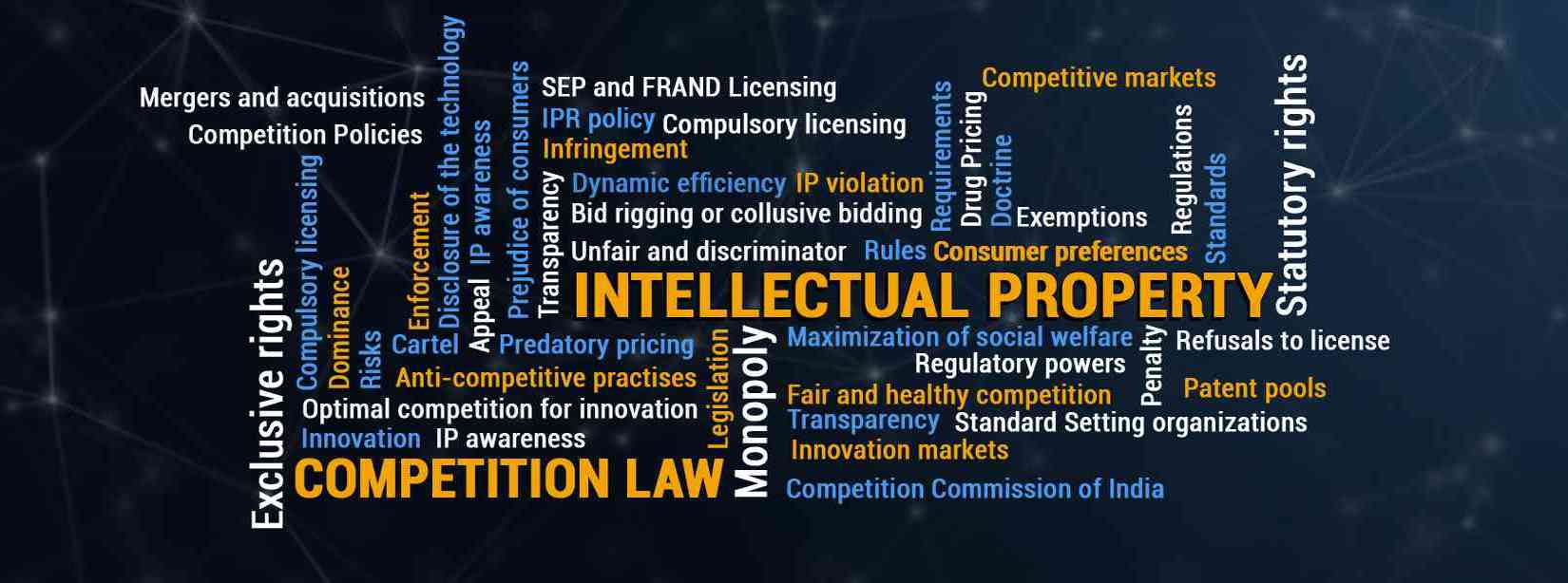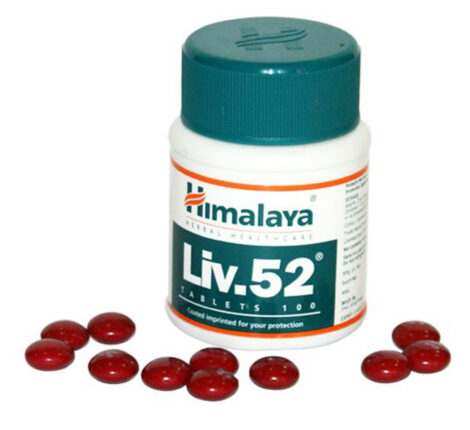The Interface Between IPR And Competition Law
Introduction
Intellectual Property Rights and Competition laws are two separate entities and work independently of each other. The main objective of competition law is an effective and easy access to the market; whereas, the main objective of IPR is monopoly with respect to a creation. Though the two laws are different and have individual objectives, they converge at a point which is the need for promotion and ensuring of consumer welfare and innovation. Both the laws work towards attaining this common goal. IP laws provide for incentives, royalties, encourage disclosure, promote innovation and also ensure that the need of the public is met with. On the other hand, competition law provides for anti-competition provisions decreasing any form of anti-competition activities, removing unfair market practices, and promoting genuine market practices.
It is important to note that the competition law has no problems with the grant of IPR but the problem arises when the owner of the IP follows anti-competitive ways post the granting of such IPRs. For example, the granting of a patent to an inventor is not a concern to the competition laws but, post such granting, if the patentee follows unfair trade practices like manipulating the royalties received or any such anti-competitive practices, then, competition law will come into play.
The actual problem and interference between the two laws arises due to the nature of the IPRs. IPRs prevent any person from monopolizing an IP or using it in any way without the prior permission or license from the IP owner. This reduces the competition in the market, thereby creating a conflict between the objectives of both the laws. Therefore, a balanced approach is necessary for a smooth functioning of both laws without an overlap.
Interference of Competitive law and IPR in Foreign Settings
The Trade Related Aspects of Intellectual Property Rights (TRIPS) Agreement in its articles has mentioned about the competition law and IPR co-relations.
Article 8.2 exclusively states that appropriate measures inconsistent with the TRIPS agreement have to be taken to prevent the abuse of the IPRs or restraint of trade or adversely affect the international transfer of technology by the right holders.
Article 31 k clearly mentions about compulsory licensing and situations when compulsory licensing is allowed. According to the provision, compulsory licensing cannot be granted if such license is being sought for any anti-competitive practices.
Article 40 of the TRIPS Agreement deals with the control of anti-competitive practices in contractual licenses. According to the article, members are given the right to check for any foul competition practices followed by any license holders that would affect the smooth functioning of the market. Through these articles, TRIPS tries to tie a strong knot between IPR and competition laws keeping IPR in check and not letting it hinder the objectives of the competition laws.
In the United States of America, the Clayton Act, the Sherman Act and the US Department of Justice and the Federal Trade Commission, Antitrust Guidelines for the Licensing of Intellectual Property, deal with the interface between IPR and competition and trust laws. Section 1 of the Antitrust Guidelines mention about prevention of anti-competitive agreements. Section 2 of the Antitrust Guidelines deals with the abuse of the dominant position, which in this context means the abusive behavior of an IPR holder in respect of trade and the market.
In the European Union, The Treaty on the Functioning of the European Union (TFEU) has been in function in relation to the competition laws and anti-competitive practices. Section 101 (previously section 81) deals with anti-competitive practices. The provision clearly states that no individual is to follow anti-competitive practices. Section 102 (previously Section 82) deals with the abuse by dominant person. In the context of IP, the provisions specify that no IP holder is to follow any anti-competitive practices for his invention and hinder the market practices. Further, no IP holder can exercise a dominant power over other market members and affect the market.
Competition Law and IPR in India
Competition Act was not enforced in India until the year 2002. Before the Competition Act came into force, the Monopolies and Restrictive Trade Practices Act (“MRTP”) was active. Competition Act, 2002, amended in 2007 was a replacement to the MRTP Act to fulfill the mischief created by the MRTP Act. After the commencement of the Competition Act, there arose a lot of debates concerning the IPRs the right holders and its interface with the competition law.
Section 3 of the Competition Act deals with the anti-competitive agreements. But it is subsection (5) of section 3 that is concerned with the interface between IPR and competition laws. Section 5(3)(i) clearly states that the competition laws do not affect, interfere or restrict any rights of the IP holder in regards to infringement of his rights or application of conditions for the use of his invention.
However, Section 4 of the Competition Act provides for conditions when the IP holder is said to have abused his powers and rights conferred to him by Section 3. They are:
- If the IP holder imposes unfair prices or conditions on his work, directly or indirectly, he is said to have followed anti-competitive practices.
- If the IP holder limits or restricts the production of goods and/or services to the market.
- If the IP holder limits or restricts scientific or technical development to reach to market to the prejudice of the consumers.
- If the IP holder denies access to market to anybody in any manner.
- If the IP holder enters into contracts with others with supplementary obligations for commercial usage of the creation that do not have any relevance to the subject of the contract.
- If the IP holder shows a dominating power and with such dominant position, transfers from one market to another.
Section 3 (5) of the Competition Act mentions a necessity of reasonable conditions for protection under IPR. The meaning and the contents of reasonable conditions are not mentioned in the provision. It, however, needs to be dealt with in a case by case manner.
Standard Setting Organizations (SSOs) are organizations that provide for standards to confer to in order to be considered a valid creation for the grant of IP. Standard Essential Patents (SEP) are those patents without which a standard cannot be attained. Here, SSOs implement IPR requiring the members to disclose everything about their IP and license their SEPs under FRAND Terms (Fair, Reasonable and Non-Discriminatory Terms). However, a varied interpretation of the FRAND terms has led to expensive litigation process.
Cases
- Aamir Khan Productions Pvt. Ltd. v. Union of India[1]: The issue that arose before the Bombay High Court was whether the Competition Commission of India (CCI) had the jurisdiction to take up cases relating to IPR. The court held that IPR is not sovereign in nature but statutory and the CCI has the jurisdiction to handle matters relating to IPR vis-à-vis completion laws.
- Entertainment Network (India) Limited v. Super Cassette Industries Ltd[2]: The Hon’ble Supreme Court, in this case, while deciding the conflict between the two laws, held that, the copyright owners have full rights on their work, but if the right violates or obstructs the smooth functioning of the market, then, such copyright is liable to refusal of license.
- Union of India v. Cyanamide India Limited & Another[3]: In this case, the Hon’ble Supreme court held that charging excessively for life saving drugs is against the principles of price control in the market and hence falls under the jurisdiction of CCI.
- Ericsson v. Micromax: In this case, Ericsson brought a suit against Micromax claiming that Micromax had infringed eight of their SEPs and that Micromax had not obtained licenses for these infringed SEPs under the FRAND Terms. The Hon’ble Delhi Court held that Micromax is liable to pay damages for the infringement and Ericsson has the right to check for all the exports Micromax has done so far which is likely to violate their IPR.
- Ericsson v. Intex: In this case Intex brought a suit against Ericsson stating that Ericsson demands for an inappropriate amount of royalties for the SEPs. On looking into the matter, the courts concluded that the claims were untrue and that Intex only brought this up to delay the process of justice and to avoid payment of royalties.
Conclusion
The reward theory of Intellectual Property Rights specifically provides for a monopoly over the creation. It allows the right holder to use, sell, license or do away with the IP the way he wants. On the other hand, competition laws aim at providing equal opportunities to everyone in the market and against stringent monopolization in the market. The two laws seem to drift in opposing directions leading to the conflicts that are seen between them. At the same time, one of the advantages of IPR is that it encourages innovation which further leading to a greater competition in the market. Competition laws are not against dominant position in a market but are against the abuse of such dominant position. To curb the extreme monopolization and abuse of dominant position, the government has come up with various processes like compulsory licensing which keeps a check on unfair prices and unfair trade practices among IP holders.
References:
- Intersection between Intellectual Property (IP) and Competition Law https://www.khuranaandkhurana.com/2016/01/04/intersection-between-intellectual-property-ip-and-competition-law/
- Naman Maheshwari Conflict Between Intellectual Property Law And Competition Law: Critical And Comparative Analysis https://www.mondaq.com/india/cartels-monopolies/807504/conflict-between-intellectual-property-law-and-competition-law-critical-and-comparative-analysis
- Gitanjali Shankar Nikita Gupta INTELLECTUAL PROPERTY AND COMPETITION LAW: DIVERGENCE, CONVERGENCE, AND INDEPENDENCE http://nujslawreview.org/wp-content/uploads/2016/12/gitanjali.pdf
- Dhruv Chadha THE INTERSECTION BETWEEN COMPETITION LAW AND INTELLECTUAL PROPERTY https://competitionlawobserver.wordpress.com/2016/08/20/the-intersection-between-competition-law-and-intellectual-property/#_edn7
- AGREEMENT ON TRADE-RELATED ASPECTS OF INTELLECTUAL PROPERTY RIGHTS https://www.wto.org/english/docs_e/legal_e/27-trips.pdf
- Antitrust Guidelines for the Licensing of Intellectual Property https://www.justice.gov/atr/IPguidelines/download
- THE TREATY ON THE FUNCTIONING OF THE EUROPEAN UNION https://eur-lex.europa.eu/LexUriServ/LexUriServ.do?uri=CELEX:12012E/TXT:en:PDF
The Competition Act of 2002 http://www.cci.gov.in/sites/default/files/cci_pdf/competitionact2012.pdf
[1] Aamir Khan Productions Pvt. Ltd. v. Union of India (2010) 112 Bom L R 3778
[2] Entertainment Network (India) Limited v. Super Cassette Industries Ltd 2008(5) OK 719
[3] Union of India v. Cyanamide India Limited & Another AIR 1987 SC 1802




